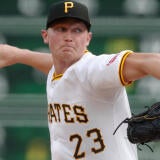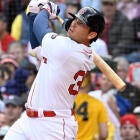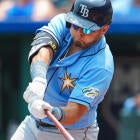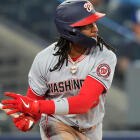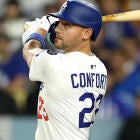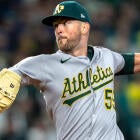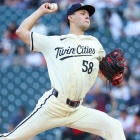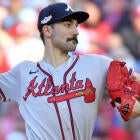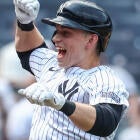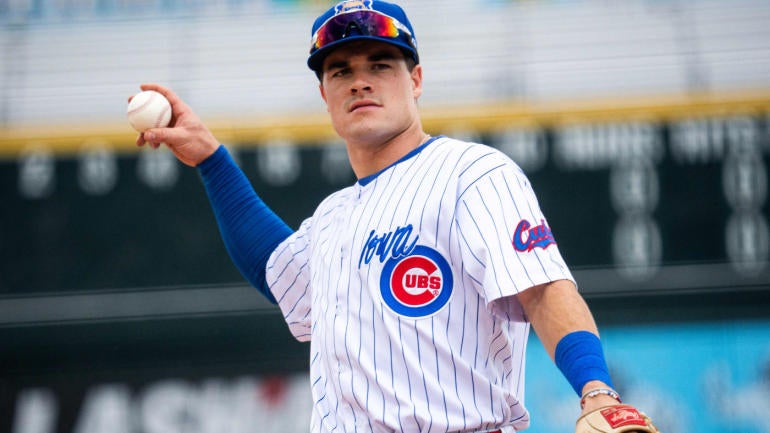
Surely by now, you've seen fit to click on my top 100 prospects for 2025. Maybe you're even in the top 100 for clicking on my top 100, creating such a strong association between player name and rank number that any departure would betray your every sensibility.
But that's the rub with rankings. They only account for one perspective. Get more people involved, and the rankings go out the window.
Turns out I involved other people in a little experiment we conducted. Specifically, we drafted only prospects, and with 5x5 (i.e., Rotisserie) scoring in mind. Here are those people:
1) Daniel Labude, The Dynasty Guru (@OrcaBaseball)
2) Michael Polidoro, The Can-Am Super Show (@CanAmSuperShow)
3) Matt Morris, Scout the Statline (@Matt_E_Morris)
4) Jeffrey Paternostro, Baseball Prospectus
5) Matt Heckman, Pitcher List (@Heckman_Matt115)
6) Zac Morain, Driveline Baseball (@makeitmorain)
7) Doc Eisenhauer, Scout the Statline (@DocHollidayDyna)
8) Chris Towers, CBS Sports (@CTowersCBS)
9) Jeremy Heist, Pitcher List (@heistjm)
10) Lucas Staggs, The Upside Prospect (@UpsideProspect)
11) Tim Kanak, Fantasy Aceball (@fantasyaceball)
12) Scott White, CBS Sports (@CBSScottWhite)
Some fine people, ones who obviously have things to say regarding prospects. And in an exercise like this one, which sidelines the theoretical for actual rubber meeting road, what's said is said to carry more weight.
Looking back at the results, my first observation is that Sebastian Walcott was a first-rounder, being drafted 11th overall, while Marcelo Mayer lasted to Pick 32. That's almost the reverse of my own rankings, but it's consistent with what I've observed in the past. Drafters, particularly in 5x5 leagues, tend to gravitate toward toolsier prospects with a wider range of outcomes, hoping for a big payoff while leaving the safer, high-floor types to someone else. It's not universally true -- Rhett Lowder, for instance, was drafted 19th overall, and he seems like the epitome of a high-floor/low-ceiling prospect -- but it's true on balance. Other examples include Felnin Celesten at Pick 48, Eric Bitonti at Pick 51, and Emil Morales at Pick 72.
- Prospects-only mock for H2H points leagues
Speaking of Bitonti and Morales, they represent another benefit of these mocks, which is to highlight prospects who didn't make my top 100. The truth is that Bitonti never stood a chance. He offers considerable power, but the whole profile feels Nolan Gorman-like to me -- and not in a good way. Morales and the 88th pick in the draft, Joendry Vargas, came closer to making my list, but I've wasted enough time on teenage international signees over the years that I prefer to see them have some success in full-season ball (Class A and up) before I fully buy in. The ones who do aren't always the ones you expect.
Other notable picks left out of my top 100 include Orelvis Martinez (73), Jurrangelo Cijntje (78), Arjun Nimmala (82), Cooper Pratt (86), River Ryan (87), Brock Wilken (90), Jeferson Quero (95) and Eduardo Tait (96). By about Round 9, more of the players selected are outside of my top 100 than in it, with Spencer Jones at Pick 104 in particular standing out. He was a consensus top-50 prospect a year ago, but his exorbitant strikeout rate at Double-A has made him an afterthought now.
Seeing as this draft was with Rotisserie leagues in mind, I would have liked to see speedsters Enrique Bradfield and Chandler Simpson come off the board. Both are in my top 100 specifically for their potential to dominate in the stolen base category (perhaps helping in batting average as well), but their lack of power puts obvious constraints on their upside. Ultimately, this group of drafters set its sights higher.
![[object Object] Logo](https://sportshub.cbsistatic.com/i/2020/04/22/e9ceb731-8b3f-4c60-98fe-090ab66a2997/screen-shot-2020-04-22-at-11-04-56-am.png)






